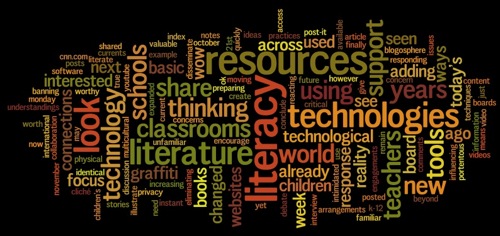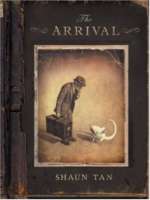by Janine Schall, University of Texas-Pan American, Edinburg, TX
WOW Currents readers are probably familiar with response strategies such as the graffiti board, written reflections, sketch to stretch, and save the last word for me. These engagements help children think about literature, deepen initial responses and prepare for literature discussions.
In this week’s post I will share several technological tools that can be used for similar purposes. One note: just like traditional response strategies, these technological tools can often be used for more than one purpose, so don’t let the way I organized these tools within this series of blog posts limit your use of them.
Continue reading





 The IBBY Congress offered multiple opportunities for learning about the reading experiences offered to children in different parts of the world. One of those experiences that was the focus of lively discussions involved children reading wordless texts in the project, “Visual journeys: Understanding immigrant children’s responses to the visual image in contemporary picture books.” Dr. Evelyn Arizpe, from the University of Glasgow, coordinator of the project, Dr Cecilia Silva-Díaz and Brenda Bellorín, from the Universitat Autonoma de Barcelona, and myself from The University of Texas at Austin, shared the power of the visual image in the graphic novel
The IBBY Congress offered multiple opportunities for learning about the reading experiences offered to children in different parts of the world. One of those experiences that was the focus of lively discussions involved children reading wordless texts in the project, “Visual journeys: Understanding immigrant children’s responses to the visual image in contemporary picture books.” Dr. Evelyn Arizpe, from the University of Glasgow, coordinator of the project, Dr Cecilia Silva-Díaz and Brenda Bellorín, from the Universitat Autonoma de Barcelona, and myself from The University of Texas at Austin, shared the power of the visual image in the graphic novel  The realization that other young citizens of the global community have messages of empowerment, or agency, to share with children of the western world is perhaps one of the most important roles of international literature. The literature, in which the main characters reveal agency through identity, voice, decision-making, and taking action according to their learned perceptions of a situation, is one way to accomplish that exchange of ideas. That was one of the outcomes for individuals who attended the IBBY Congress last month as active participants in IBBY’s role of building bridges across global cultures.
The realization that other young citizens of the global community have messages of empowerment, or agency, to share with children of the western world is perhaps one of the most important roles of international literature. The literature, in which the main characters reveal agency through identity, voice, decision-making, and taking action according to their learned perceptions of a situation, is one way to accomplish that exchange of ideas. That was one of the outcomes for individuals who attended the IBBY Congress last month as active participants in IBBY’s role of building bridges across global cultures. 